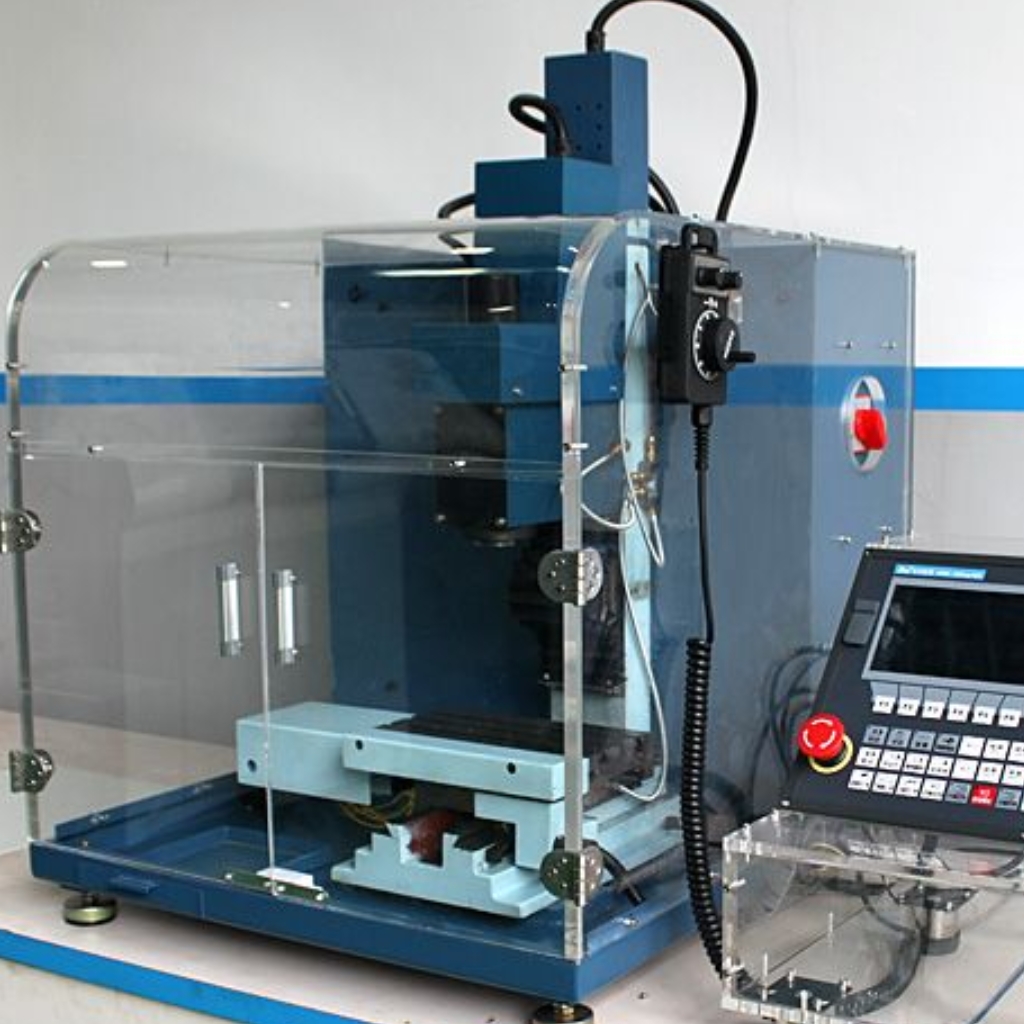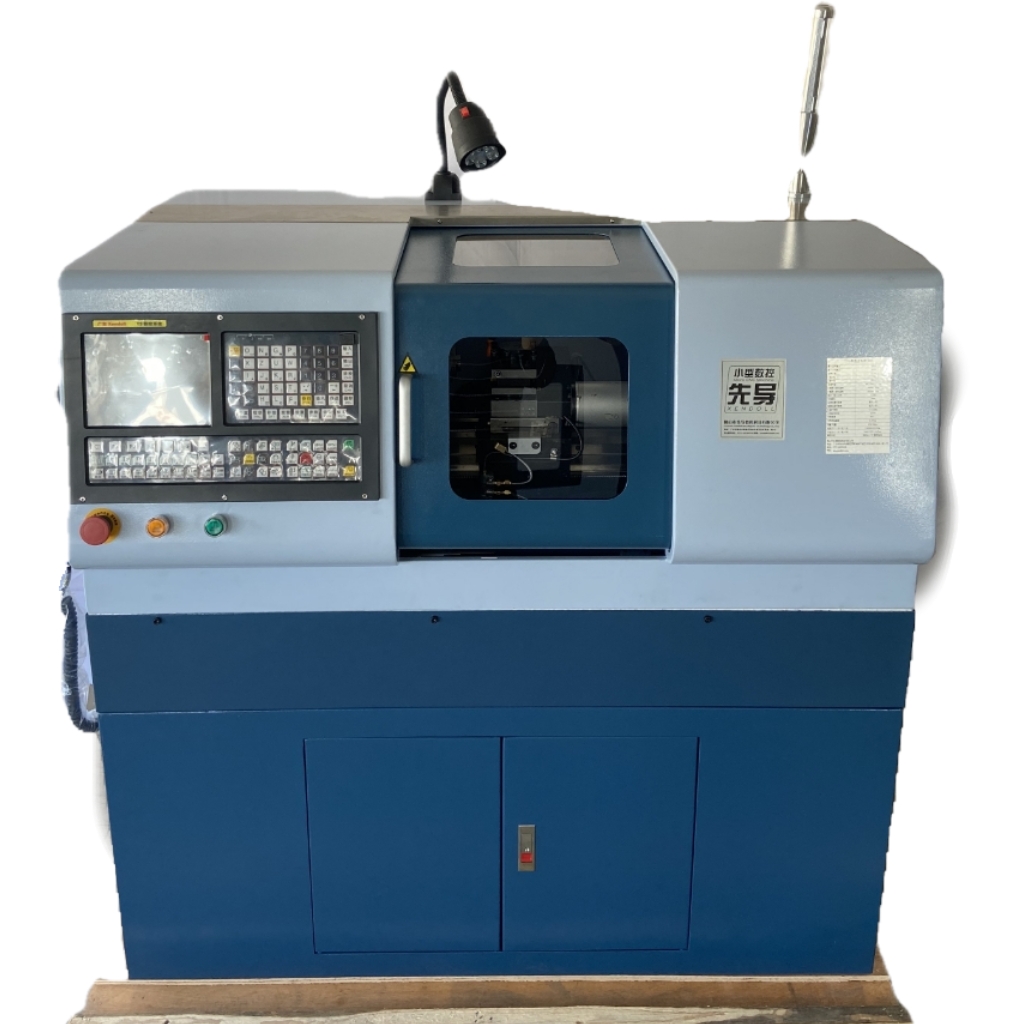Blog
Xendoll has 22 years of experience in the production of small machine tools. We will help you choose the suitable machine and share our experience in CNC machining with you.
 Jun 27, 2025
Jun 27, 2025

 844
844
In today's world of intricate parts, repeatable precision, and complex designs, the CNC machine stands as a cornerstone of modern manufacturing. But what exactly is a CNC machine? Simply put, a CNC (Computer Numerical Control) machine is an automated manufacturing tool that uses computerized instructions to precisely control the movement of cutting tools or workpieces. It transforms digital designs into physical reality with incredible accuracy and efficiency, replacing manual operation with programmed commands. From aerospace components to custom hobbyist projects, CNC technology powers innovation across countless industries and skill levels.

Demystifying the Core Components
A CNC machine isn't a single monolithic device but a sophisticated system integrating several key elements:
The Controller (The Brain): This is the computer at the heart of the operation. It runs specialized software (often CAM software - Computer-Aided Manufacturing) that interprets the design instructions (typically a G-code program) and sends precise electronic signals to the machine's drives.
The Drives & Motors (The Muscles & Nerves): These components translate the controller's electronic signals into physical movement. Servo motors or stepper motors, guided by the drives, power the motion along each controlled axis (X, Y, Z, and sometimes more like A, B, or C for rotational movement).
The Machine Tool (The Body): This is the physical structure that performs the cutting, milling, routing, turning, grinding, or other subtractive process. Common types include:
CNC Mills/Machining Centers: Use rotating cutting tools to remove material from a stationary workpiece (milling) or sometimes a rotating workpiece (turning on a mill-turn center).
CNC Lathes: Rotate the workpiece against stationary cutting tools to create cylindrical or conical shapes.
CNC Routers: Often used for wood, plastics, and softer metals, typically with a moving gantry system.
CNC Plasma Cutters: Use a high-velocity jet of ionized gas to cut through electrically conductive materials (primarily metal).
CNC Laser Cutters/Engravers: Utilize a focused laser beam to cut or mark materials.
CNC 3D Printers (Additive): While technically additive, they also operate under CNC principles, depositing material layer by layer based on digital instructions.
The Cutting Tool (The Hand): The specific bit, end mill, drill, insert, laser, or plasma torch that physically interacts with the workpiece to shape it.
The Worktable & Fixturing (The Grip): Holds the raw material (workpiece) securely in place during the machining process. Precision fixturing is critical for accuracy.
The CNC Workflow: From Idea to Object
Understanding how a CNC machine operates reveals its power:
Design (CAD): The process starts with creating a detailed 2D or 3D digital model of the desired part using Computer-Aided Design (CAD) software.
Programming (CAM): The CAD model is imported into Computer-Aided Manufacturing (CAM) software. Here, the programmer defines:
Toolpaths: The precise routes the cutting tool will take.
Tool Selection: Choosing the right cutter for the material and operation (e.g., roughing end mill, finishing ball nose).
Cutting Parameters: Speed (spindle RPM), feed rate (how fast the tool moves), depth of cut, coolant use.
Fixturing Strategy: How the workpiece will be held.
G-Code Generation: The CAM software translates all these instructions into G-code, a standardized, machine-readable programming language (comprising alphanumeric commands like G00, G01, M03, etc.) that tells the CNC controller exactly what movements to make.
Machine Setup: The operator secures the workpiece and the correct cutting tool(s) into the machine, loads the G-code program, and performs any necessary calibrations or tool length measurements.
Automated Machining: The operator initiates the program. The CNC controller executes the G-code commands, precisely coordinating the movement of the axes and the spindle to cut the workpiece according to the digital design. Minimal human intervention is needed during this phase, primarily for monitoring.
Completion & Inspection: Once machining is complete, the finished part is removed and inspected for accuracy and quality against the original CAD specifications.
The Compelling Advantages of CNC Machining
Why has CNC technology become so dominant? The benefits are significant:
Unmatched Precision & Accuracy: CNC machines achieve tolerances measured in thousandths of an inch or hundredths of a millimeter, far exceeding consistent manual capabilities. Complex geometries are executed flawlessly.
Superior Repeatability & Consistency: Once a program is proven, a CNC machine can produce identical parts, one after another, virtually indefinitely. This is essential for mass production and quality control.
Enhanced Complexity: CNC machines can effortlessly create intricate shapes, contours, pockets, and 3D surfaces that are extremely difficult or impossible to produce manually.
Increased Productivity & Speed: Automation allows machines to run unattended for long periods (lights-out manufacturing). Rapid movements and optimized toolpaths significantly reduce production time compared to manual methods.
Reduced Human Error & Operator Fatigue: Automation minimizes errors stemming from manual skill variation or fatigue. Operators focus on setup, programming, and monitoring rather than constant manual control.
Improved Safety: Operators are generally removed from direct contact with moving cutting tools during the machining cycle, enhancing workplace safety.
Flexibility: Changing production simply involves loading a new program and workpiece/tooling. Switching from making one part to another is relatively quick compared to reconfiguring manual setups.

Where CNC Machines Excel: Diverse Applications
CNC technology permeates nearly every manufacturing sector and even hobbyist workshops:
Aerospace & Defense: Critical engine components, airframe structures, landing gear parts requiring extreme precision and reliability.
Automotive: Engine blocks, transmission components, intricate interior parts, custom aftermarket modifications.
Medical & Dental: Surgical instruments, implants (hips, knees), prosthetics, dental crowns and bridges.
Electronics: Heat sinks, enclosures, connectors, circuit board prototypes and fixtures.
Consumer Goods: Appliance components, tooling for plastic injection molding, custom fixtures.
Energy: Turbine blades, oil & gas drilling components, parts for renewable energy systems.
Prototyping & R&D: Rapidly transforming design concepts into functional prototypes for testing and iteration.
Education & Training: Essential tools for teaching modern manufacturing principles, engineering design, and STEM skills in schools, colleges, and technical institutes.
Art, Signage & Woodworking: Creating intricate sculptures, detailed signage, custom furniture components, and decorative elements.
Model Making & Hobbyist Projects: Enabling enthusiasts to create precise parts for RC models, custom tools, and personal projects (this is where compact, benchtop CNC machines, like those from Xendoll, shine).
Conclusion: The Indispensable Power of Precision Automation
In essence, a CNC machine is the physical manifestation of digital design, powered by automation and guided by mathematical precision. It represents a fundamental shift from manual craftsmanship to computer-controlled fabrication, enabling levels of complexity, consistency, and efficiency previously unattainable. Whether producing mission-critical aerospace components on massive industrial machining centers or crafting intricate hobby projects on a compact benchtop mill, the core principle remains the same: translating digital instructions into precise physical form. For mechanical distributors, educational suppliers, and machining enthusiasts seeking reliable, high-precision tools, understanding and leveraging CNC technology – from the largest industrial systems to accessible mini CNC machines – is key to unlocking innovation and success in the modern world of making. The power to shape ideas into reality, repeatedly and accurately, lies at the heart of what a CNC machine truly is.
For details, please refer to the following link:https://www.xendolltools.com/category/micro-cnc-machine.html



 Show all our samples
Show all our samples
 Provide you with a free quote
Provide you with a free quote
 Answer all the questions you may have
Answer all the questions you may have
 Guided installation and other options
Guided installation and other options